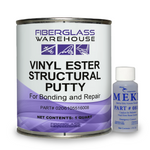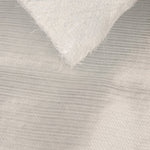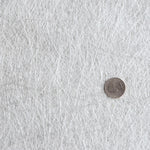You have no items in your shopping cart.
Epoxy resins have become a go-to material for a variety of DIY projects, woodworking creations, and artistic endeavors. However, with so many types of epoxy products on the market, choosing the right one can feel overwhelming. Among the most popular options are table top epoxy resins, deep pour epoxy resins, and laminating epoxy resins.
Each resin type has unique characteristics, benefits, and specific applications. Picking the wrong one could result in wasted time, effort, and materials. This guide will break down the differences between these three types of epoxy resins, helping you confidently choose the right one for your next project.
What Is Table Top Epoxy Resin?
Features and Characteristics
Table top epoxy resin is a clear, self-leveling, high-gloss epoxy commonly used for coating flat surfaces. It cures to form a durable, glass-like finish, making it perfect for functional yet visually appealing projects. It typically has a thinner consistency compared to deep pour resins but thicker than laminating resins.
One defining feature of table top epoxy is its short cure time, often fully setting within 24-48 hours depending on conditions. This quick turn-around makes it ideal for projects with smaller layers that don’t require a lot of depth.
Common Applications for Table Top Epoxy
Table top epoxy resin is explicitly designed for use on, well, table tops! Beyond that, it’s perfect for a variety of projects, including:
- Covering surfaces like wood, countertops, or bar tops to create a protected, high-gloss finish.
- Art projects such as resin art, coasters, jewelry or embedding decorative objects like bottle caps or coins into tabletops.
- Sealing surfaces to create a durable, waterproof layer.
Benefits of Table Top Epoxy Resin
- Self-Leveling: Designed to spread and flatten smoothly across flat surfaces, making it easy to use for beginners and pros alike.
- UV-Resistant Options: Many brands offer UV-resistant coatings, reducing yellowing over time when exposed to sunlight.
- Impact and Scratch Resistant: Its glass-like coating ensures your surface is both attractive and long-lasting.
Pro Tip:
While fantastic for flat surfaces, table top epoxy is not suitable for casting thick layers. If you're working on a project that requires depth, such as river tables, opt for a deep pour epoxy resin instead.
What Is Deep Pour Epoxy Resin?
Features and Characteristics
Deep pour epoxy resin is designed to pour thicker layers, often between 1-2 inches per application. It has a low-viscosity formula that allows it to flow easily into crevices, making it well-suited for projects with significant depth and intricate designs.
Unlike table top epoxy, deep pour resin takes significantly longer to cure. The slower curing process reduces the risk of heat-related issues like bubbling or cracking, which can occur when pouring large volumes of resin too quickly.
Common Applications for Deep Pour Epoxy
Deep pour epoxy resin shines in applications where thickness and transparency are critical. Here are a few popular uses:
- River tables: Its ability to pour thick layers makes it ideal for creating those stunning epoxy-and-wood combinations.
- Casting molds: Create custom sculptures or objects with intricate designs.
- Encapsulation: Encapsulate objects like flowers, rocks, or even LEDs for unique decorative effects.
Benefits of Deep Pour Epoxy Resin
- Thicker Layers: Perfect for projects that require filling deep areas in a single pour.
- Crystal Clarity: Many deep pour resins offer excellent transparency, lending a glass-like finish.
- Bubble-Free: With a slower curing process, bubbles naturally escape, creating a pristine finish.
Pro Tip:
Always check the manufacturer’s guidelines on maximum pour depths and curing times. Pouring too much resin all at once can lead to overheating and uneven curing.
What Is Laminating Epoxy Resin?
Features and Characteristics
Laminating epoxy resin is a highly versatile resin primarily designed for creating and bonding layers of material. It has a thinner consistency compared to table top or deep pour epoxy, which is perfect for penetration and bonding.
Because of its exceptional bonding strength, laminating epoxy resin is often used in applications involving fiberglass, carbon fiber, or reinforcing wood projects. Laminating epoxies are also known for their long working time, allowing you to carefully apply and adjust layers before it begins to set.
Common Applications for Laminating Epoxy
Laminating epoxy resin is widely used in industries like construction, marine repair, and crafting. Some common uses include:
- Fiberglassing projects: Great for boats, surfboards, and reinforcing materials.
- Composite construction: Used to bond layers of materials like wood, carbon fiber, or fiberglass.
- Primed surfaces: It’s commonly applied in woodworking as a clear coat
Benefits of Laminating Epoxy Resin
- Strong Bonding Properties: Excellent adhesion to a wide variety of surfaces, making it ideal for structural projects.
- Thin Consistency: Allows deep penetration into porous surfaces like wood, strengthening the material.
- Extended Working Time: Provides greater flexibility for large or complicated projects.
- Versatility: Comes in a kit with fast, medium or slow hardeners. Also, gives you the option of a 2:1 or 4:1 mix ratio.
Pro Tip:
Laminating resins can be sensitive to moisture. Ensure your workspace and materials are dry to avoid a hazy or cloudy finish.
Which Epoxy Resin Should You Choose?
Choosing the right epoxy resin ultimately boils down to the nature of your project. Here’s a quick recap:
- Table Top Epoxy Resin: Perfect for flat surfaces that need a gorgeous, glass-like finish. Ideal for countertops, bar tops, and resin art.
- Deep Pour Epoxy Resin: Best for creating thick layers or intricate designs. Great for river tables, molds, and encapsulations.
- Laminating Epoxy Resin: Ideal for structural bonding and laminating applications like fiberglassing or wood reinforcement.
Discover the Wonders of Epoxy Resins Today
Epoxy resin opens up endless possibilities for DIY enthusiasts, woodworkers, and resin artists to create beautiful, functional, and durable projects. Whether you're crafting a sparkling river table, preserving flowers in a clear cast, or waterproofing a boat, understanding the differences between table top, deep pour, and laminating epoxy resins ensures you’ll get the best results.
If you're ready to get started and need more tips and tricks, explore our comprehensive guides and product recommendations to make your next project a masterpiece. Don’t forget to experiment and have fun!









